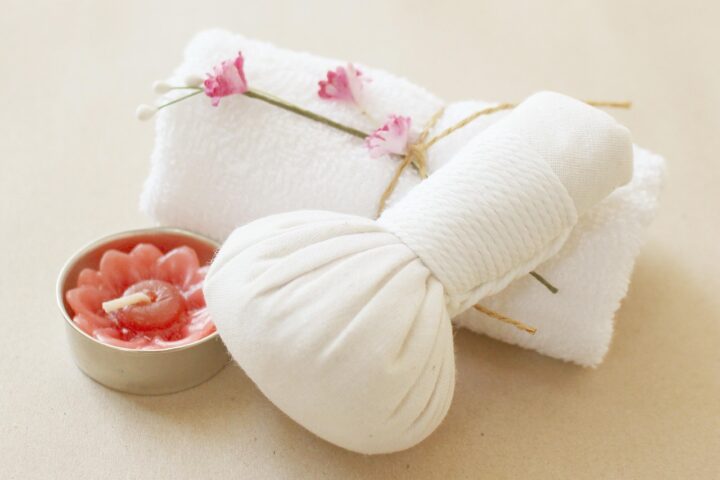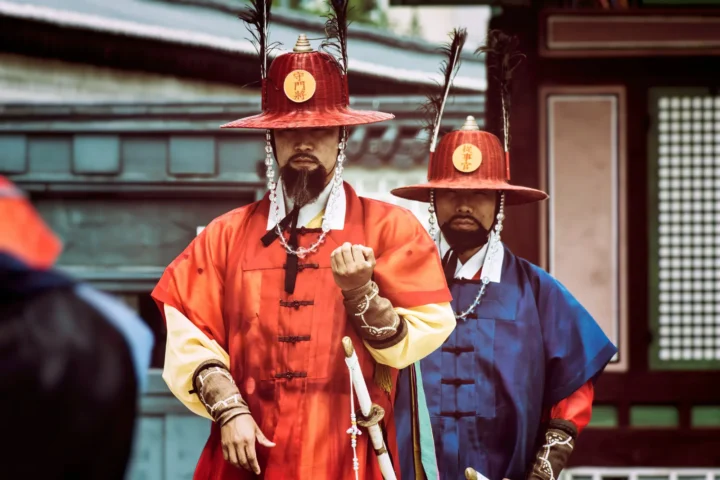Walk into any Korean cultural festival today, and you’ll see bright colors flowing everywhere. This is Hanbok, Korea’s traditional clothing that has survived for centuries and is now becoming popular around the world.
More than just beautiful garments, Hanbok tells the story of a nation. Each flowing line and carefully chosen hue carries the weight of history, the warmth of family traditions, and the promise of cultural continuity.
Whether you’re curious about Hanbok’s history or how to wear it today, this guide answers your questions with fresh insights and practical tips.
What Is Hanbok? Understanding Korean Traditional Clothing
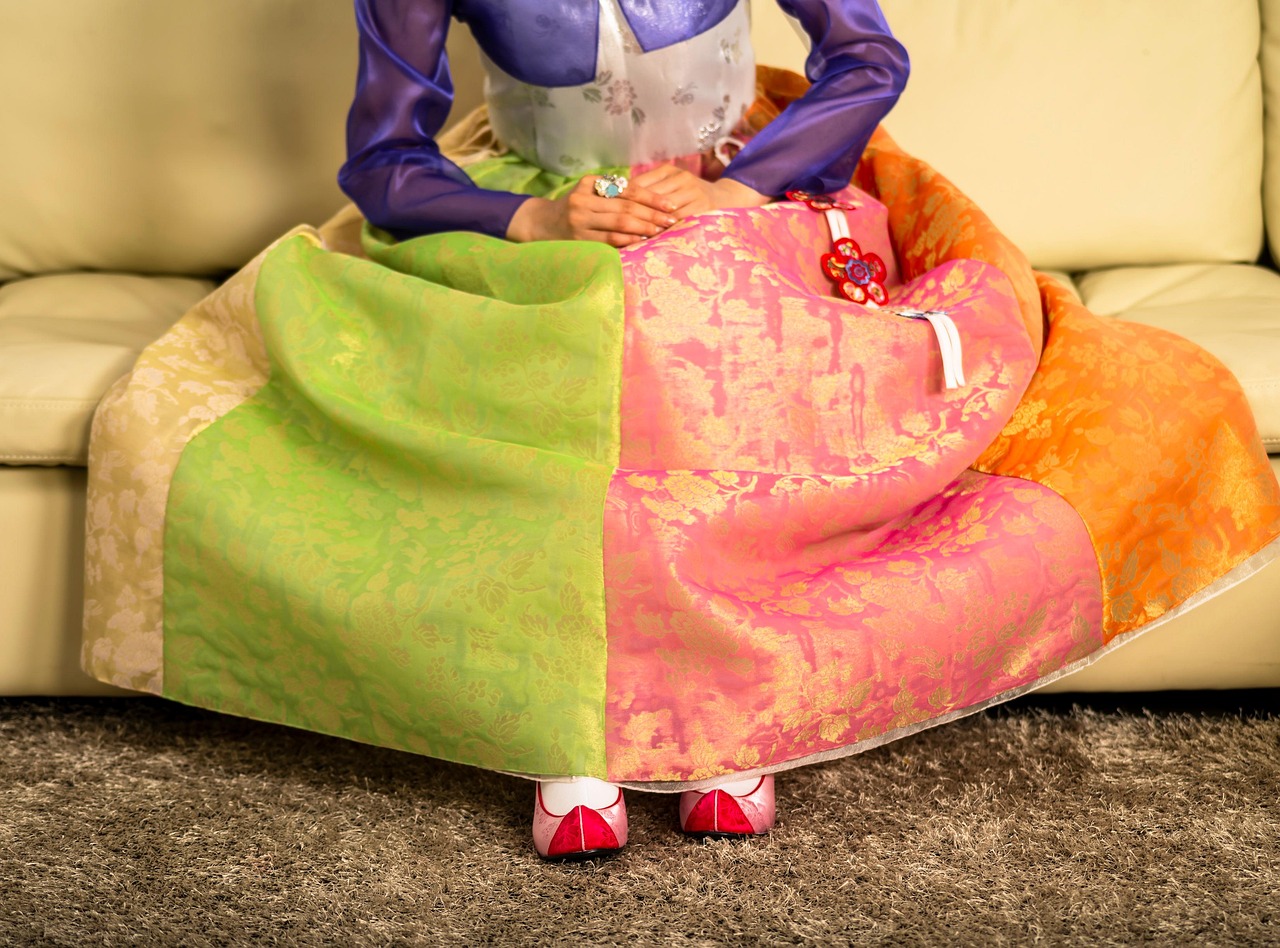
Hanbok, meaning “Korean clothing,” is a traditional garment worn for centuries during festivals, weddings, and cultural events.
Its design features a jeogori (jacket) and chima (skirt) for women or jeogori and baji (pants) for men, often crafted from silk, cotton, or linen.
The attire’s vibrant colors and elegant lines reflect Korea’s philosophy of balance and harmony, rooted in the obangsaek (five traditional colors) system.
- Red: Symbolizes joy and passion.
- Blue: Represents peace and clarity.
- Green: Evokes nature and harmony.
- Yellow: Denotes nobility and grace.
- White: Stands for purity and simplicity.
These colors appear in countless combinations throughout Hanbok designs. Bright, contrasting colors often appear in festive Hanbok, while subtle, muted tones characterize everyday wear.
The Rich History of Hanbok: From Ancient Kingdoms to Modern Times
Understanding Hanbok’s history helps us appreciate why this traditional clothing remains so important to Korean culture. The story of Hanbok spans over 2,000 years, mirroring Korea’s changing society, politics, and values through different periods.
Three Kingdoms Period (57 BCE – 668 CE): The Foundation Years
Hanbok began during Korea’s Three Kingdoms period, when the kingdoms of Goguryeo, Baekje, and Silla each developed their own clothing styles. This era laid the foundation for what we now recognize as traditional Korean clothing.
Each kingdom had distinct characteristics:
- Goguryeo Hanbok featured bold, practical designs with wide-sleeved jackets and loose trousers, perfect for their warrior culture and northern climate.
- Baekje Hanbok emphasized elegance with refined details, softer lines, and elaborate embroidery that influenced later Korean fashion.
- Silla Hanbok balanced practicality with artistic flair, combining elements from both neighboring kingdoms.
The basic structure we know today – jeogori (jacket) paired with chima (skirt) for women or baji (pants) for men – was established during this time. Even decorative socks called beoseon, now known as “magic socks,” date back to this period.
Goryeo Dynasty (918-1392): The Age of Refinement
The Goryeo period marked a major turning point in Hanbok history. What started as practical clothing evolved into symbols of refinement and social status. This dynasty transformed Hanbok from simple garments into sophisticated fashion statements.
Key changes during Goryeo included:
- Longer hemlines and more voluminous silhouettes that reflected growing prosperity.
- Introduction of the distinctive wide-sleeved jeogori paired with high-waisted chima.
- A textile revolution with improved silk production and new dyeing techniques.
- Expanded color palettes featuring deep purples, rich greens, and brilliant reds.
However, the Mongol invasions significantly influenced Goryeo fashion. After 30 years of invasions, Korea was forced to pay tribute to the Mongols, and this political relationship brought Mongolian fashion elements into Korean clothing.
Joseon Dynasty (1392-1897): The Golden Age of Hanbok
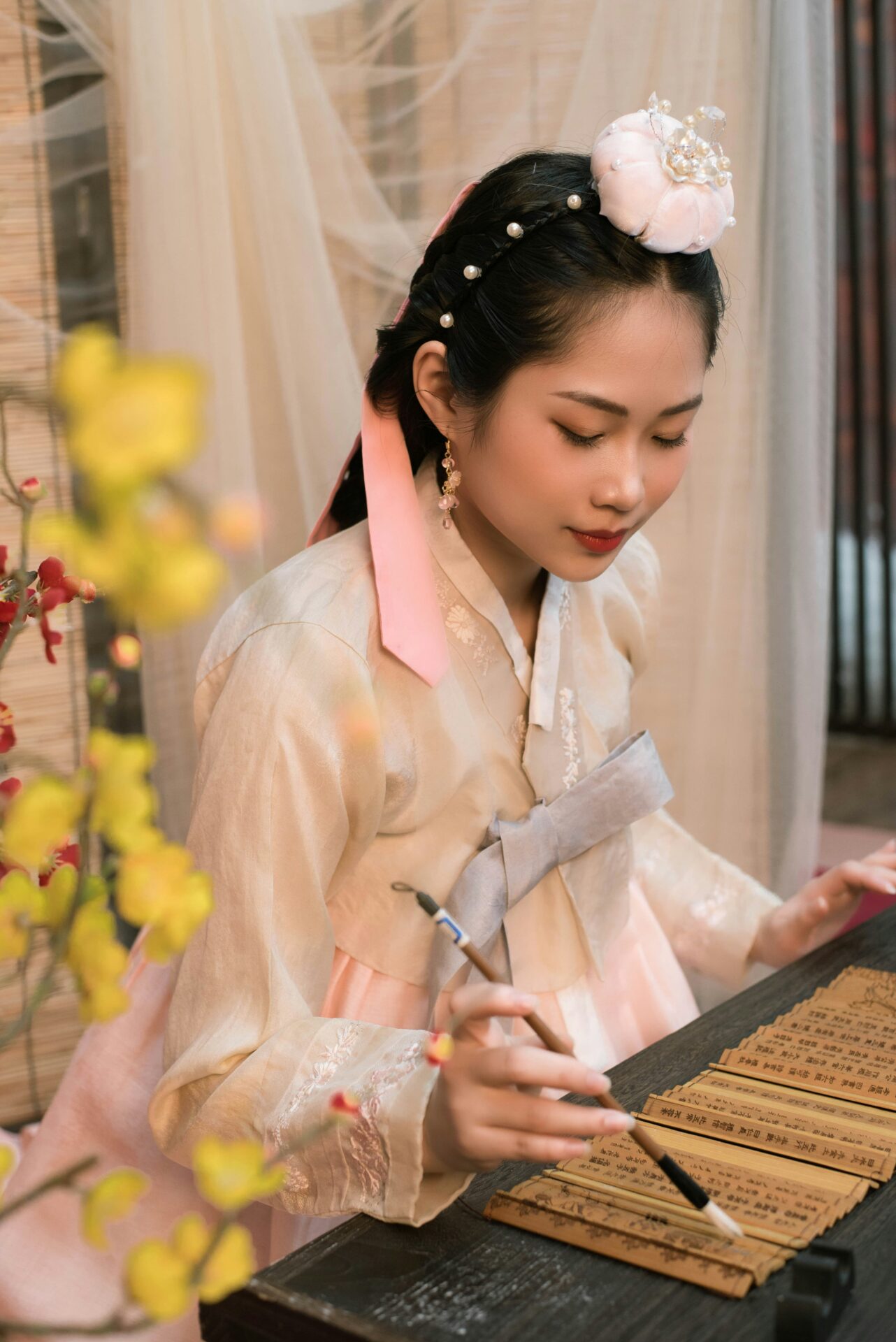
The Joseon Dynasty represents the golden age of Hanbok design. Most modern Hanbok styles are based on designs from the mid to late Joseon period. This era established the classic Hanbok silhouette we recognize today: tight tops with looser bottoms.
Social hierarchy became clearly visible through clothing during Joseon:
- Colors indicated social status and family situations. Purple remained the royal color throughout both the Goryeo and Joseon dynasties.
- Upper-class women wore jeogori in specific colors. For example, navy indicated they had a son, while violet showed they had a living husband.
- Court officials in the Baekje Kingdom wore colored belts, like purple, red, or blue, to show their ranks.
- White clothing held special significance for ordinary Koreans. Contrary to assumptions about a lack of dyeing techniques, wearing white was a conscious choice that became an expression of national identity.
Late Joseon and Korean Empire (1897-1910): Meeting the Modern World
As Korea opened to the world, Hanbok faced its first major challenge from Western fashion. This period saw an experimental blending of Eastern and Western styles.
Changes included:
- Military uniforms influenced men’s Hanbok with structured designs and gold braiding.
- Some women adopted Western-style blouses under traditional jeogori jackets.
- Fabrics became lighter and more practical to accommodate changing lifestyles.
Japanese Colonial Period (1910-1945): Suppression and Resistance
The colonial period represents one of the darkest chapters in Hanbok history. Japanese authorities actively tried to suppress Korean traditional clothing as part of their broader effort to erase Korean identity.
The suppression included:
- Banning white clothing, allegedly for sanitary reasons, though it was really about eliminating Korean cultural symbols.
- In 1940, Japan passed Ordinance №20 as part of a systematic campaign to erase Korean identity.
- White clothing was labeled as an “evil practice” by Japanese officials.
However, Koreans found ways to resist:
- Some continued to wear white clothing as a form of unspoken resistance against the occupying force.
- Cultural organizations formed to secretly preserve Hanbok-making traditions.
- Families passed down knowledge of traditional clothing construction.
Post-Liberation and Modern Revival (1945-Present): Hanbok’s Renaissance
After Korea’s liberation, Hanbok experienced periods of decline and revival. While Western clothing dominated daily life, Hanbok maintained its ceremonial importance.
Today, contemporary designers are revolutionizing Hanbok fashion, creating pieces that appeal to younger generations while honoring cultural heritage. This transformation has made Korean traditional dress more accessible and wearable for daily life.
Modern Hanbok designers focus on several key improvements:
- Comfort and practicality: Traditional Hanbok can be restrictive for modern activities. Contemporary versions use lighter fabrics and modified silhouettes that maintain the classic look while allowing greater movement.
- Versatile styling: Modern Hanbok pieces can be mixed with Western clothing or worn as complete outfits. This flexibility makes them practical for various occasions, from casual wear to formal events.
- Updated fabrics: While traditional silk and ramie remain popular, designers now incorporate contemporary materials like cotton blends and sustainable fabrics that are easier to care for and more affordable.
- Size inclusivity: Modern Hanbok makers offer extended size ranges and customization options, making these beautiful garments accessible to more people.
Popular modern Hanbok brands like Leesle, Tchai Kim, and Rieul have gained international recognition. Leesle offers Hanbok mixed with streetwear like denim jackets and hoodies, with prices around $150 per piece. Tchai Kim focuses on ready-to-wear options with patterned dresses and coats, while Rieul is famous for Hanbok suits that cost at least $1,100 to make
Hanbok’s Global Rise: The Korean Wave Effect
The Korean Wave (Hallyu) has carried Hanbok to shores its creators never imagined.
When BTS members wear traditional Korean attire for international performances, or when Korean historical dramas showcase royal Hanbok in all their glory, millions of viewers worldwide get their first glimpse of this beautiful tradition.
Fashion weeks in Paris and New York now regularly feature Korean designers who blend Hanbok elements into contemporary wear. The Fashions of Multicultural Australia (FOMA) exhibition treats Hanbok with the same reverence given to haute couture, recognizing its place in global fashion history.
This cultural export has created a ripple effect. Tourists in Seoul flock to Hanbok rental shops, while international buyers order custom pieces from Korean designers. Social media platforms feature countless posts of people wearing Hanbok, creating a global community connected by appreciation for Korean culture.
Where to Rent Hanbok in Seoul
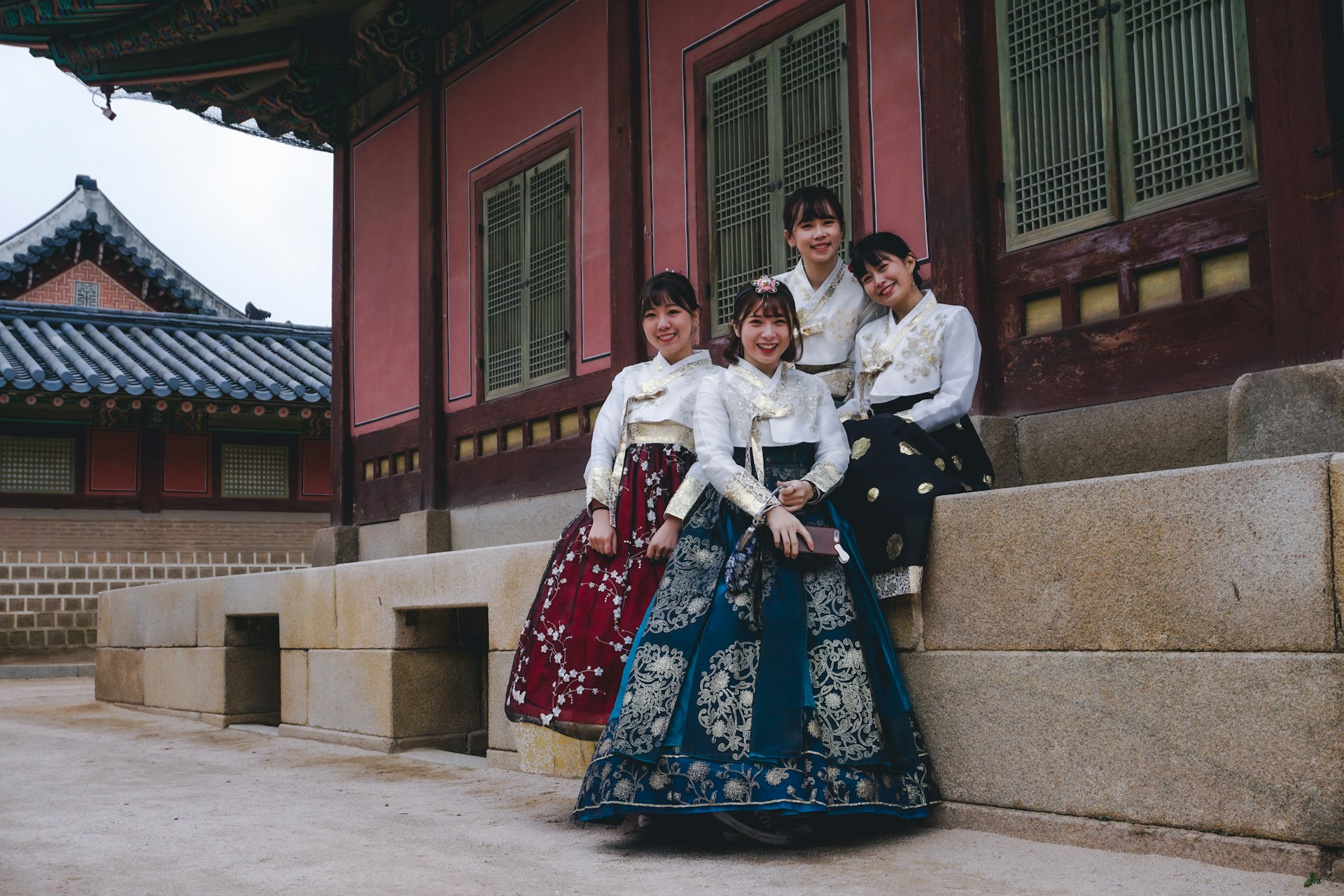
Hanbok rentals offer a fun, affordable way to experience Korean culture in Seoul, perfect for photoshoots, palace visits, or cultural immersion.
Many rental shops in Seoul provide a range of styles, from traditional Joseon-era designs to modern fusions, along with accessories like hairpins and shoes. Prices typically start at $10-$30 for a few hours, making it accessible for tourists and locals alike.
Here are a few places where you can rent these garments:
- Hanboknam: Offers a wide range of styles and English-speaking staff for easy communication.
- Oneday Hanbok: Known for premium designs and photoshoot packages, plus hanbok for children, so you can include the entire family.
- Studio KJD: Offers overnight hanbok rental and packages that include accessories and outdoor or indoor photoshoots.
Most shops offer same-day rentals, but booking online is smart, especially during busy seasons like spring or fall.
Where to Buy Hanbok in Seoul
If you want to own a Hanbok, Seoul’s markets and boutiques have plenty to offer.
- Gwangjang Market: Find ready-made Hanbok starting at $100, with vendors open to bargaining.
- Lee Hwa-sook Hanbok (Samcheong-dong): Specializes in custom designs using silk and linen, priced from $300-$1,000 based on materials.
- Online Option – Coupang: Offers affordable, ready-to-wear Hanbok with fast delivery across Seoul.
The price of Hanbok depends on fabric type and dyeing methods. Natural fibers like silk cost more, while cheaper options use synthetic materials like polyester.
Whether you rent or buy, wearing Hanbok connects you to Korea’s rich culture. Pair your experience with a visit to historic palaces like Gyeongbokgung for unforgettable memories!
FAQs: Common Questions About Hanbok
When should I wear Hanbok?
Hanbok shines at cultural celebrations, weddings, festivals, or any time you want to connect with Korean heritage. Many people also enjoy wearing it for special photoshoots or cultural learning experiences.
How can I try Hanbok without buying?
Rental services at Korean cultural sites, community centers, or online platforms offer affordable access to authentic Hanbok in various styles and sizes.
What’s the difference between traditional and modern Hanbok?
Modern Hanbok maintains traditional aesthetics while incorporating contemporary comfort features like lighter fabrics, easier care instructions, and adapted fits for modern lifestyles.
Where can I find Hanbok events?
Check Korean cultural centers in your area, or search for National Hanbok Day and Hanbok Culture Week celebrations. Many cities with Korean communities host regular cultural events.
Sources:
Hanbok Culture Week Official Website
Namsan Seoul Tower Hanbok Culture Experience Center
How Hanbok’s Rising Popularity Is Fusing Tradition With Modern Fashion Trends
